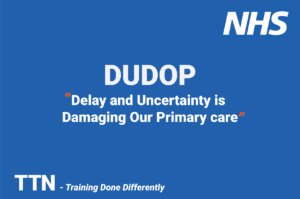Happy Monday!
Yeah, right… I know.
Got your week planned? Yer t’do-list ready? I hope not, they’re a bad idea.
Lists become overloaded and overwhelming. A list of unrealistic expectations. Secretly you know, you’ll never ‘get all that done’ and give up…
… then you start to get anxious, lose your sense of achievement. Abandon the list and start another one!.
The trick? Do the task you least want to do, first… but no one ever does.
The upshot, to cheer yourself up you squander time on stuff you like, lose all sense of context and have a false sense of achievement.
Is there an alternative? Yup…
.. things are either urgent or not urgent, important or not important.
Draw a square and divide it into four quadrants, label the top two, not important and important and the two at the bottom not urgent and urgent. Then take your list-of-stuff-to-do and put each item into one of the boxes.
Now you know what you’ve got to get on with, get someone else to do, or dump.
Quadrant prioritisation. Steven Covey uses it in his book, Habits of Successful People. He pinched it. Actually, it’s Eisenhower’s Matrix. Yup, him, President Dwight D….
… there are ways of finessing it.
Prioritisation is what seems to be missing from HMG at the moment. Confused by the urge to ‘hit the ground running’, disrupted by the reality of government and the dawning realisation…
… a ‘policy’ isn’t a plan.
Hence the NHS is in a limbo, waiting for the budget.
Waiting lists, the absolute ‘people’s priority’. No guessing which box that should be in, in Dwight’s matrix.
Cutting them is Labour policy but…
… a policy isn’t a plan.
Waiting lists should be in the urgent and important quadrant of minister’s to-do-list.
HMG’s problem is when you’re working at the sharp end of a public service, everything gets thrown into the urgent and important box…
… not least, a resolution to the longstanding problems with NHS IT.
Right now, shuffling its way through the parliamentary process is Data use and access legislation. It includes laws ensuring that in the future, NHS IT procurement makes systems interoperable.
There’s no need for legislation. It is and can be done, within procurement specifications.
What is not clear is what happens to existing records and the extent to which they can and will be made accessible from a single-point of contact.
The public fact-sheet about the legislation talks about ‘interchangeable data’ which is an entirely meaningless phrase. It goes on to talk about ‘data being transferable’, which does not necessarily mean it’s interoperable.
Elsewhere it talks about information ‘flowing through the system’ and ‘interchangeable data between health and social care’ which does not mean interoperable systems.
An interoperable system is vastly more achievable than interchangeable when you consider the history of data and the various models it’s been stored in.
It might mean clever people could in some way, take primary, disparate data and make it accessible through a single source, it’s called normalising data. It’s already being done with 40m primary care records, across London.
The briefing sheet adds;
‘Legislation will improve clinical outcomes, speed up the delivery of care… reduce duplication in lab tests and medication errors, by making information standards mandatory for all suppliers … ensuring health and care data is recorded and managed in the same way.’
Well, it might. We’ll need more legislation about Data Guardians who’s responsible for what and when and to fix who gets access to your health data, and when.
It’s important because…
- my data on its own, is only useful to me.
- My data and another old geezer’s is a bit more valuable but
- all old geezer’s data is priceless…
… to our collective healthcare, to planners making old-geezer-care better and to big-pharma developing new drugs that might even make old-geezers young again.
They don’t need to know who we are or where we are, they just need to know what we are… all old geezers.
Safe and protected access and consent has been the stumbling block to all previous attempts at data management.
The answer is to do what the banks do. Give us a pin number and let us decide which and when a retailer gets our money.
Using the same approach we can decide what health provider gets access to our records.
In the too difficult box? No, they do it in Australia.
News and Comment from Roy Lilley
Contact Roy – please use this e-address roy.lilley@nhsmanagers.net
Reproduced at thetrainingnet.com by kind permission of Roy Lilley.








